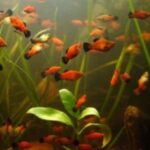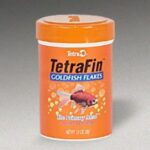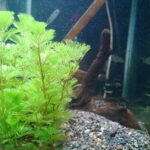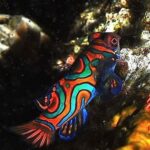Anyone who’s had a fish tank in their lifetime knows that there is a huge variety of fish foods available in the market today. Most everyone knows about the common fish flakes, but there are so many other types of foods to try out and can be found at just about any pet store. There are also foods that you might find in your own refrigerator that fish devour.
Let’s take a look at some of the most commonly available fish foods as well as some other tasty snacks you may not have thought of before. There are foods that should be used as a staple in the fish’s diet, however variety is key.
Fish Flakes
Everyone that has had a fish, knows about fish flakes. These are the dried flakes that typically come in a plastic jar and are sold everywhere from specialty pet stores to large retail chains. There are fish flakes targeted to specific fish from goldfish to angelfish. Some flakes are marketed for their color enhancing ingredients or illness-fighting abilities.
All in all fish flakes are an ok food depending on the quality. It’s just like cat and dog food; there are good ones and bad ones. Typically, you get what you pay for. If you’ve purchased a poor quality or generic store brand bottle of flakes before, you may have found this out for yourself. Sometimes, these low grade flakes can not only cause tank water to go cloudy fouling up the fish habitat, but they can also lack many of the nutrients the fish needs on a daily basis. Flakes that are fed for every feeding every day can eventually cause some constipation problems in fish as well.
Fish Pellets
Pellets are a great staple diet. It is important to find the type of pellet that is appropriate for you particular fish. Pellets come in various sizes so if you’ve got small-mouthed fish, get the tiny pellets. You can also find pellets for top feeders, bottom feeders as well as the fish that typically feed in the middle of the water column. If you’re fish is a top feeder, avoid pellets that sink quickly. On the other hand, bottom feeders will never actually get to the food if it only floats so pay attention to the bottle label when making your purchase.
Pellets typically cost more than fish flakes but are often more nutritious. You can find good quality pellets at small and large pet stores. You may even want to check for local fish breeders as many are also in the business of manufacturing their own line of fish pellets that are composed of the ingredients that have worked well for their breeding facility.
Wafers, Vacation Feeders, Algae Tabs
Wafers, vacation feeders and algae tabs are targeted towards the bottom feeders of the fish tank. You can find wafers that consist of anything from algae to spirulina. Most bottom feeding fish will devour any of these including algae tabs. It is important to limit the use of these foods to the amount that the fish can actually consume in a short period of time. Too much food makes for a foul tank in no time.
Vacation feeders are the white blocks that can be purchased just about anywhere. They can be found in various fish-themed shapes. Bottom feeders get the most use out of these as many other fish rarely find themselves at the bottom of the tank. They usually last a couple of days so if you’re going to be away for a short period of time, these will work great.
In most pets stores, you will find a freezer with various types of frozen foods. Many of us see the freezer and think it’s just for the rodents used for snake feeding. However, there are usually items that are for fish as well. Commonly, prepackaged frozen bloodworms, krill, brine shrimp and many other types of foods are readily available. Most fish will gladly accept any of these.
To feed frozen foods such as these, put a little bit of water taken right from the aquarium into a small cup. Add a small bit of the frozen food and allow it to thaw completely. Once it has thawed, pour it into the tank and watch the frenzy. I like to use a turkey baster that is used only for fish duties, too. Simply suck up some of the thawed food, and squirt it right in to the tank. You’ll find that soon the fish will come to recognize the baster and will enjoy being fed directly.
Freeze Dried Foods
You can find freeze dried foods anywhere. They are alright to feed as a snack but frozen foods are better if they are available. Freeze dried foods eaten mostly by top feeders as they don’t sink. In large quantities they can cause severe constipation in some fish which, when untreated, can actually kill a fish. If you’ve found that your fish likes the freeze dried versions of bloodworms, brine shrimp or tubifex, try the frozen varieties. They might cost a little bit more but they are a healthier option for your pet.
Live Foods
Many people prefer to feed live foods to their fish. Depending on what kind of fish you have, this may be a good choice if you can ensure the food is healthy enough to be bed to your fish. Keep in mind that if you feed a sick fish to your fish, your fish will also become sick. Feeding fish that are sold in the pet stores as “feeder fish” should be avoided. These fish are crammed into small spaces, are shipped in on trucks and are constantly dieing from disease and stress. Just because a fish “looks” good, doesn’t mean he’s healthy. One sick fish in that crowded tank of feeders can mean all of them are contaminated.
However, those who have good luck feeding live fish, tend to raise their own. They’ve got the fish they have as pets, as well as another tank or two set aside specifically for raising live food. Live food can be anything from brine shrimp, tubifex, Daphnia, vinegar eels, bloodworms and more. For larger more aggressive fish, some fish enthusiasts will scour their own yard for live foods such as flies, mosquito larvae, maggots and white worms.
Other Foods
So now we know about the foods that we can buy in the fish department of our local pet store. Let’s take a look at our own kitchen, starting with the freezer. Peas are an excellent choice for almost all fish. I’ve had fish from herbivores to carnivores devour peas. To feed peas, simple thaw a small amount in a bowl of tank water, pop the pea out of it’s skin and feed the non-skin portion. Pop them right into the tank and see what happens. Most goldfish love peas as do many topical fish. They do sink quickly so whatever is missed by your top feeders will be lapped up by your bottom feeders. Peas are an excellent item to feed as a maintenance food once a week or so to help prevent constipation that results from the feeding of dried foods.
Most bottom feeders will enjoy just about any frozen veggie you find in your freezer. Snails in particular love anything from green beans to corn. Don’t overlook some of the seafood in your freezer, too. In fact, fish such as puffers can greatly benefit from some of the hard shelled seafood that you can purchase at the counter of the grocery store.
Open the refrigerator and scour the produce there. Basically, anything you find here can be used in the fish tank. Keep in mind that if it’s healthy for you, it’s a pretty good bet that it’s healthy for your fish. You can find veggie clips at any pet store or retail chain to make it easy to feed large leafy type veggies. Avoid iceberg lettuce as it lacks basically any nutrients. However, kale, mustard greens, spinach and any other green veggie can be used. Cucumbers, squash and sweet potatoes are enjoyed as well. If you happen to have one of the many types of apple snails in your tank, watch them enjoy chunks of veggies.
You can feed fruit as a snack from time to time however it can cause the water to foul fairly quickly. Feed only the small amounts that your fish or snails can consume quickly.
So there you have it. Try some new things the next time you feed your fish and have fun with it. You might be surprised to learn what each one really likes.





